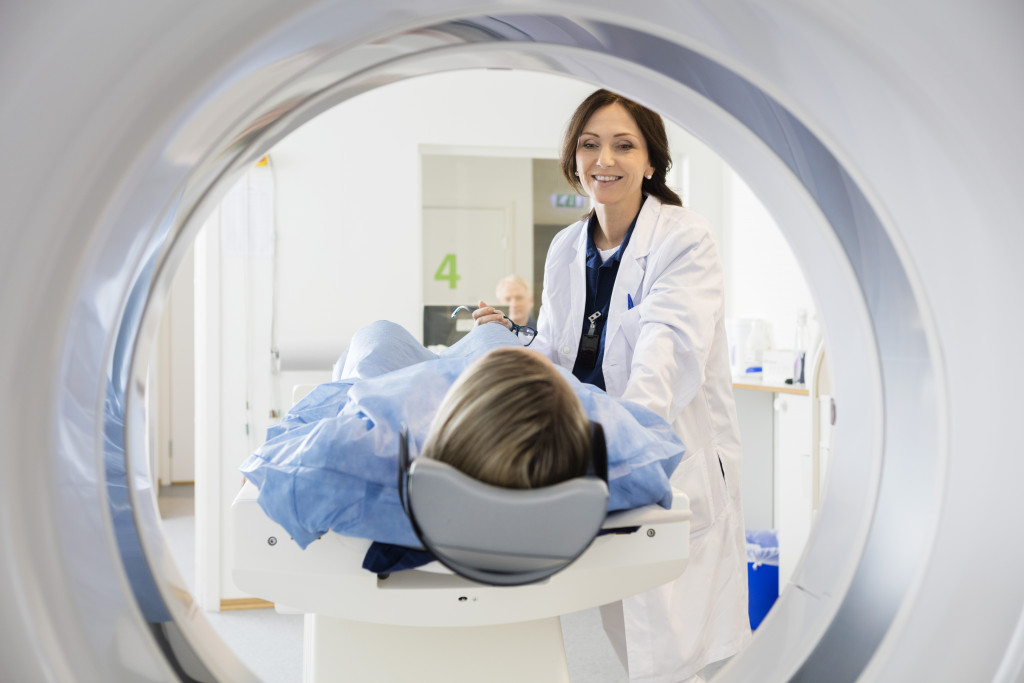When a patient is ill, the doctor’s first priority is to make a diagnosis. This involves ordering various tests and examining the results to see if they point to any specific illness. Hence, diagnostic centers will always be needed and are a good business idea. Here are the types of essential equipment you need to invest in to make your diagnostic center succeed.
MRI Scanners
Magnetic resonance imaging (MRI) scanners use magnetic fields and radio waves to produce images of the inside of the body. They are very versatile and can be used to examine almost any part of the body.
The traditional MRI machine is tunnel-like and can induce claustrophobia. Claustrophobic patients often need to be sedated to undergo an MRI scan. Newer, open MRI scanners are available that do not have this problem. If you have this type of machine, you can attract more patients.
MRI scans are used to diagnose various conditions, including tumors, strokes, aneurysms, and problems with the spine or joints.
CT Scanners
Computerized tomography (CT) scanners use x-rays to produce images of the inside of the body. Unlike ordinary x-rays, they can produce images of cross-sections or slices of soft tissues, bones, and blood vessels. They do this by combining and processing the x-ray images through a computer.
CT scanners are very good at showing up abnormalities such as tumors. CT scans are used to diagnose conditions such as cancer, heart disease, and stroke.
X-Ray Machines
X-ray machines use x-rays to produce images of the inside of the body. They are very good at showing up abnormalities such as fractures. They are also used to guide surgeons during biopsies and other procedures.
X-ray machines are less expensive than MRI and CT scanners.
Ultrasound Machines
Ultrasound machines have a transducer that sends out high-frequency sound waves that bounce off internal structures to produce two-dimensional images of the inside of the body. It does not use ionizing radiation that x-rays and CT scans use. There are several types of ultrasound machines.
Doppler Ultrasound Machines
Doppler ultrasound machines are used to measure the flow of blood through arteries and veins. They use sound waves to detect the movement of red blood cells.
Doppler ultrasound is used to diagnose conditions such as blockages in arteries, problems with blood flow, and heart disease.
Cardiac Ultrasound or Echocardiogram Machines
Echocardiogram machines are used to examine the heart. They use sound waves to produce images of the heart chambers, valves, and surrounding structures.
Echocardiograms are used to diagnose conditions such as heart disease and congenital heart defects.
3D and 4D Ultrasound Machines
Three-dimensional (3D) ultrasound machines create images of the inside of the body in three dimensions. Four-dimensional (4D) ultrasound machines add the dimension of time so that you can see the movement of organs and structures.
3D and 4D ultrasound machines are used to examine unborn babies. They can be used to diagnose birth defects, evaluate the health of the fetus, and determine the sex of the baby.
Breast Ultrasound Machines
Breast ultrasound machines are used to examine the breasts. They use sound waves to produce images of the breast tissue.
Breast ultrasound is used to diagnose conditions such as cysts, tumors, and inflammation.
Transvaginal and Transrectal Ultrasound Machines
Transvaginal ultrasound machines are used to examine the female reproductive organs. They use sound waves to produce images of the ovaries, fallopian tubes, and uterus.
Transrectal ultrasound machines are used to examine the male reproductive organs. They use sound waves to produce images of the prostate gland.
Transvaginal and transrectal ultrasounds are used to diagnose conditions such as infertility, cancer, and blockages.
Positron Emission Tomography (PET) Scanners
PET scanners are used to examine the body at the cellular level. They use a radioactive tracer that is injected into the body. The tracer collects in areas of high cell activity.
PET scans are used to diagnose conditions such as cancer, Alzheimer’s disease, and heart disease.
Mammography Machines
Mammography machines are used to examine the breasts. They use x-rays to produce images of the breast tissue.
Mammography is used to diagnose conditions such as cancer, cysts, and inflammation.
DEXA Scanners
DEXA scanners are used to measure bone density. They use x-rays to produce images of the bones.
DEXA scans are used to diagnose conditions such as osteoporosis and bone fractures.
Fluoroscopy Machines
Fluoroscopy machines are used to examine the body. They use x-rays to produce images of the inside of the body in real-time.
Fluoroscopy is used to diagnose conditions such as cancer, heart disease, and gastrointestinal problems.
EEG Machines
Electroencephalogram (EEG) machines are used to examine the brain. They use electrodes to record the electrical activity of the brain.
EEGs are used to diagnose conditions such as seizures, sleep disorders, and stroke.
EMG Machines
Electromyography (EMG) machines are used to examine the muscles and nerves. They use electrodes to record the electrical activity of the muscles.
EMGs are used to diagnose conditions such as muscle weakness, nerve damage, and carpal tunnel syndrome.
Invest to Serve More Patients
This article outlined some of the most important pieces of equipment that every diagnostic health center should have in order to provide quality care. Diagnostic health centers must equip themselves with the latest technology to serve their patients most effectively.




